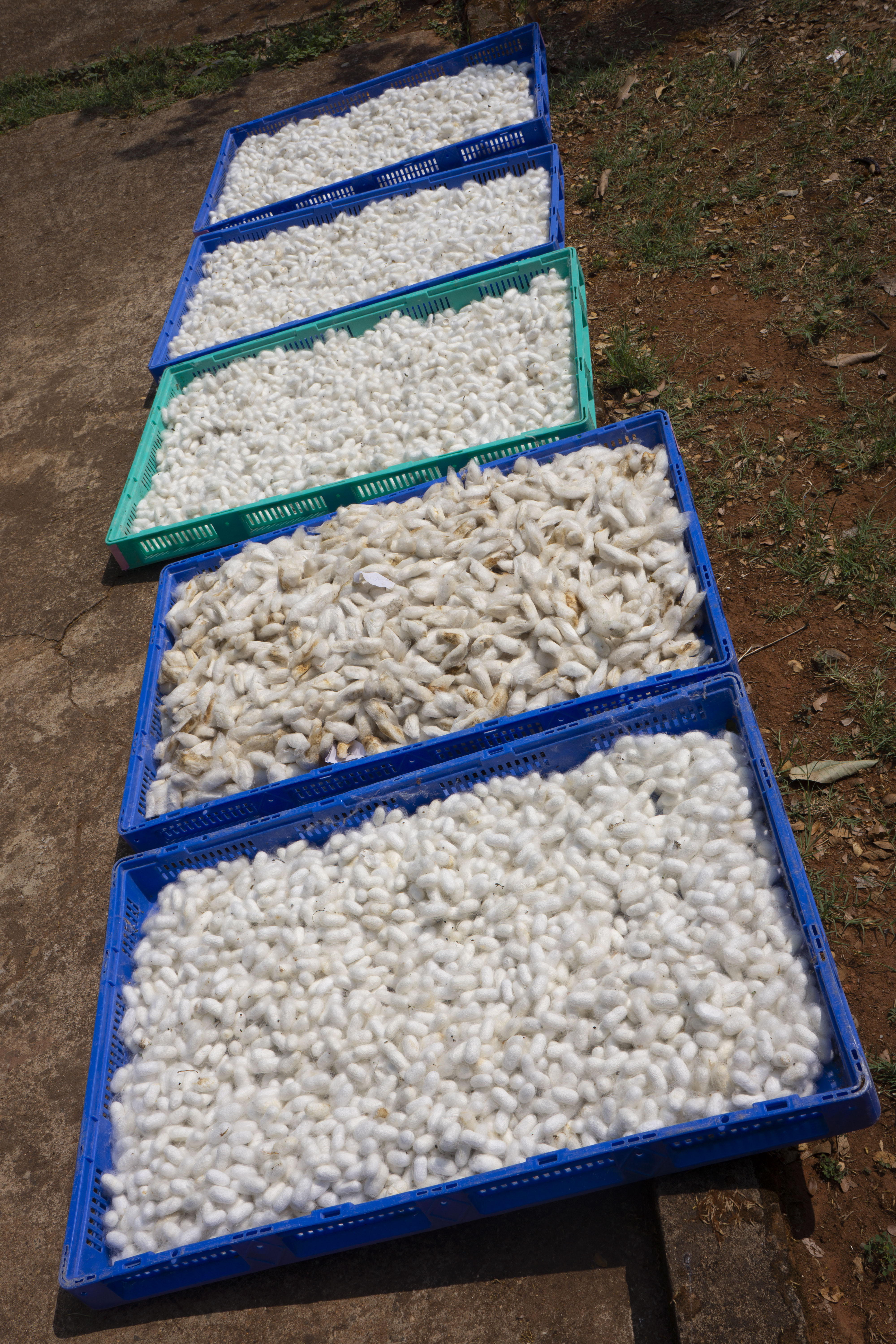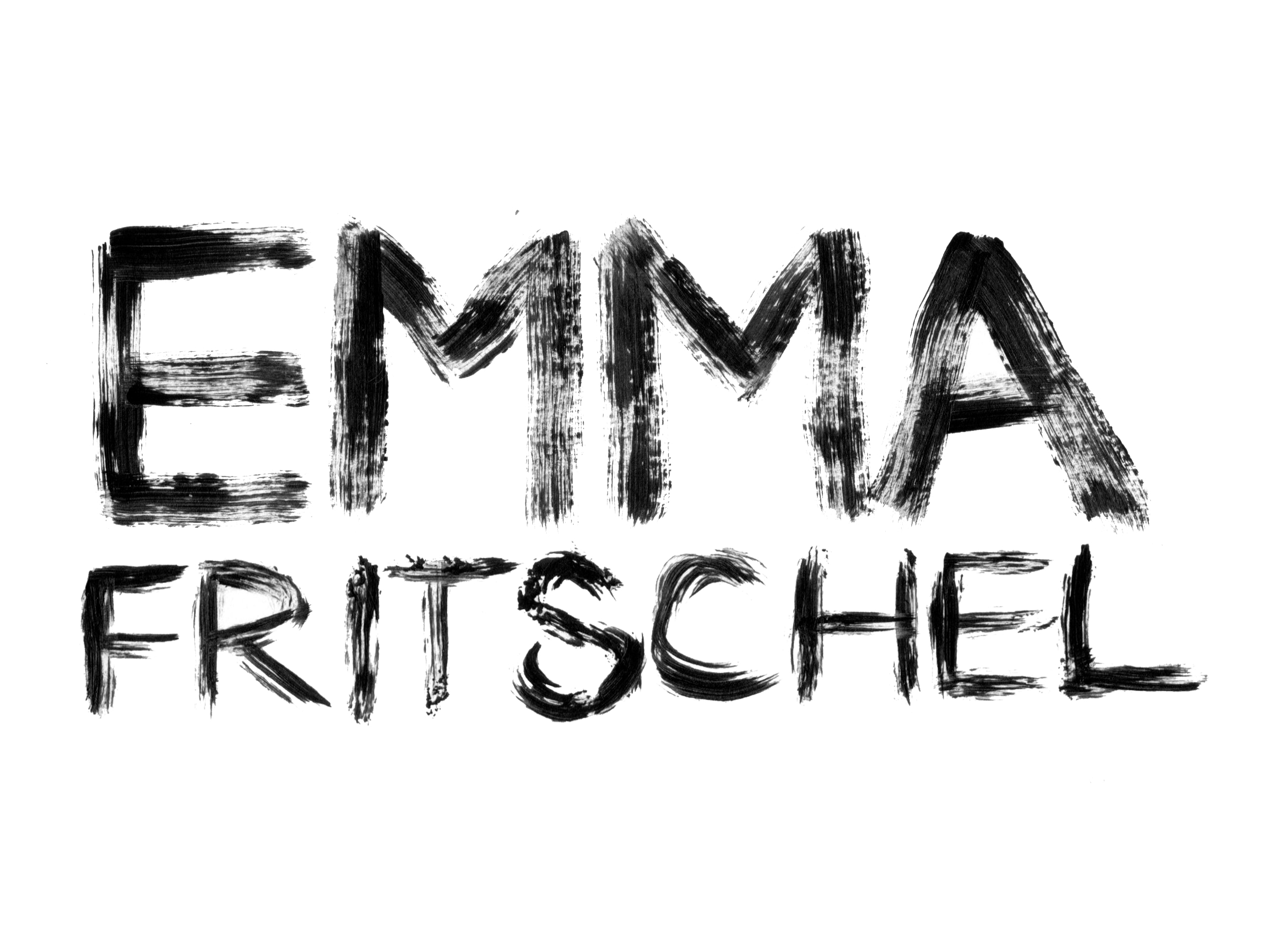
Sericulture in Koraput
May 3, 2022
Sericulture - the production of silk - refers to the care of the silkworm (Latin name: bombyx mori)
from the egg phase to the cocoon stage as well as the production of trees that provide leaves which the silkworms eat. Just like other produce, silk is a farmed and cultivated product that has been selectively bred to produce the lustrous and smooth quality of silk that we see today, all of which can be attributed to the global sericulture industry.
India and China are the world‘s largest producers of silk. I
took a trip to a silk farm research center in Koraput, India to appreciate the effort and process behind silk production. Koraput is a city in the Koraput district of the Indian state of Odisha. As I drove up to the research center, the building is surrounded by a farmed forest. When I arrived we found people working outside the center’s building carefully plucking silk cocoons from plastic nets. There were hundreds, probably even thousands, of cocoons already plucked from the nets laid out in plastic containers in front of the building.
![A woman plucks silk cocoons from their plastic nets.]()
![The harvested silk cocoons are collected into plastic bins.]()
We were met outside the building by a group of researchers from the center. They guided us inside, where they showed us how the silkworms produce silk. I’ll summarize with an excerpt from the encyclopedia:


“The silkworm caterpillar builds its cocoon by producing and surrounding itself with a long, continuous fibre, or filament. Liquid secretions from two large glands within the insect emerge from the spinneret, a single exit tube in the head, hardening upon exposure to air and forming twin filaments composed of fibroin, a protein material. A second pair of glands secretes sericin, a gummy substance that cements the two filaments together.
Silk is a continuous filament within each cocoon, having a usable length of about 600 to 900 metres (2,000 to 3,000 feet). It is freed by softening the binding sericin and then locating the filament end and unwinding, or reeling, the filaments from several cocoons at the same time, sometimes with a slight twist, forming a single strand. Several silk strands, each too thin for most uses, are twisted together to make thicker, stronger yarn in the process called throwing, producing various yarns differing according to the amount and direction of the twist imparted.”
Source: Encyclopedia Britannica

Still confused? It’s okay. It took several explanations to leave me questionless. There are two purposes for a silkworm in the sericulture process; mating and silk extraction. Think about it like this:
A larva egg grows into a silkworm; the silkworm secretes a fibrous filament (that’s the silk) from its body; it wraps this filament around itself creating the cocoon; the silkworm inside the cocoon develops into a pupa (the intermediate stage between silk to moth metamorphosis); the pupa develops into a moth; the moth bursts from the cocoon; the moths mate; the moths lay silkworm larva eggs; the process starts again.
A larva egg grows into a silkworm; the silkworm secretes a fibrous filament (that’s the silk) from its body; it wraps this filament around itself creating the cocoon; the silkworm inside the cocoon develops into a pupa (the intermediate stage between silk to moth metamorphosis); the farmers boil the cocoons to kill the pupa; the silk from the intact cocoon is extracted.
(If you’re interested in learning about more about the ethical production of silk, read about my trip to a wild silk farm in India here).
If it’s still doesn’t make sense, then your confusion is testament to the careful effort and complex nature of silk production!
These silkworms were easy to love. Their lifespan is only about ten days, and they spend most of that time eating. They are fed leaves four times per day! As we walked into the feeding room, I could hear the careful and sharp little sounds of silkworms chomping away. I guess that story of the hungry caterpillar isn’t just a story...
As we ventured further into the research center, I noticed a pile of golden yellow silk cocoons. Their shape and texture was the same as the white cocoons, but they were clearly different somehow. I asked one of the researchers - why are these cocoons yellow? They explained that some silkworms produce colored cocoons - yellow, gold, straw, red, pink, or even green. They produced this color when they lived in the wild to blend in with their environment, so they would be less attractive to possible predators. Over the centuries, silkworm farmers selectively bred for whiter and whiter silk until they achieved pure white, ideal for dyeing. Now that silkworms have been domesticated, their cocoon color is irrelevant to their survival, but has been leveraged by the sericulture industry as a natural alternative to chemical dyeing. However, the highest demand for silk is still for pure silk.

The most surprising part of the whole process to me is the duration.
The entire process from larva to moth takes about a month. Only a month - that’s it! The other natural fibers - wool, cotton, and linen - take multiple seasons to develop into textiles. A sheep grows its wool coat over the entire calender year, cotton trees are ready for harvest after 5-6 months, and flax plants take several weeks before they’re pulled from the ground to process into linen. A silkworm is only alive for 10 days before it forms its cocoon. It completely surrounds itself after 24 hours, and the cocoon is fully developed within two weeks. I assumed the silkworm develops the cocoon from the inside out, but it actually spins the protective outside before developing the softer inside - another, now irrelevant, survival method.
Of course, that’s not including the time it takes to grow the trees that provide leaves which the silkworms feast upon. This part can take several years. And the leaves are an important part of the silk production process! There are different types of silk - ex. mulberry, eri, tassar - and each of them is defined by the specific type of leaf which the silkworm eats.
Eri silk is produced from silkworms who feast upon the leaves from castor trees. Eri means castor in Assamese, the language spoken in the Indian state of Assam where eri silk is mainly produced.
Mulberry silk, the type of silk the Koraput silk farm research center specializes in, is defined by the leaves of the mulberry trees. The farmed forest area around the center is made up of rows and rows of mulberry trees to keep those silkworms happy and well fed.

The cyclical nature of silk production - from planting the trees to harvesting the cocoons - demands respect. It’s absolutely magnificent, and almost magical, the way in which we’ve developed a textile from such a small creature’s metamorphosis. Maybe the next time you put on your silk blouse or reach for your silk tie in your closet, you can think about and appreciate the silkworm’s hard work taken to create such an ethereal fiber and the generations of farmers whose effort gave us this luxurious textile.
© Emma Fritschel Art 2025
